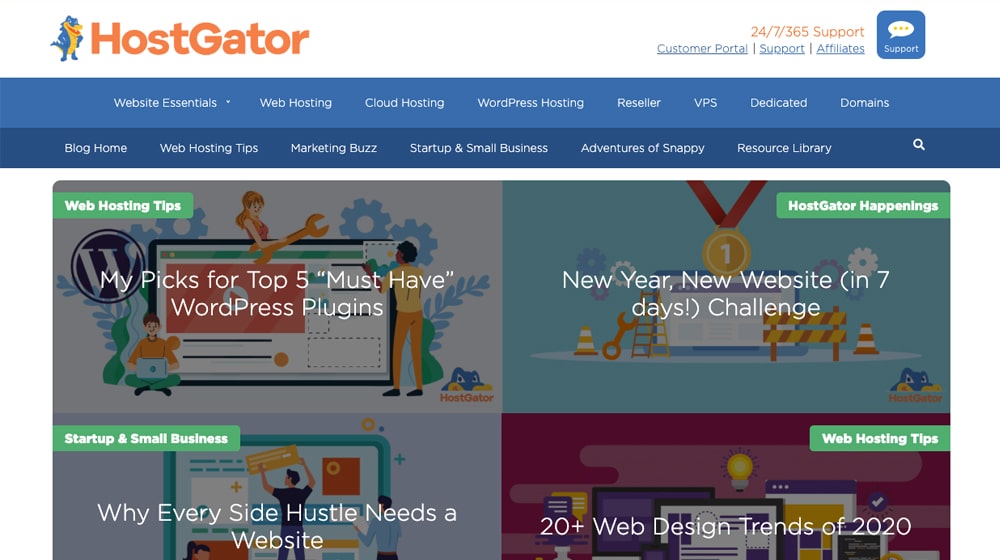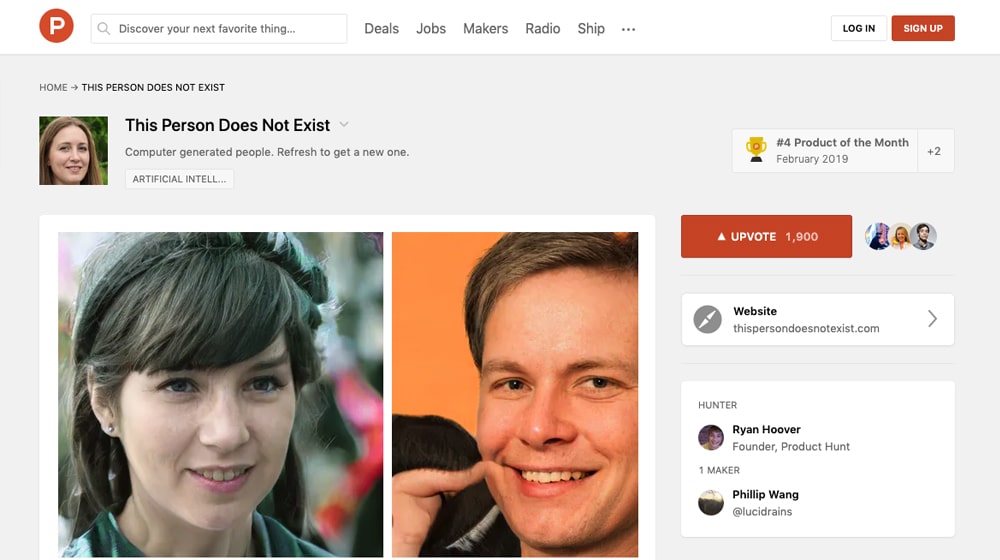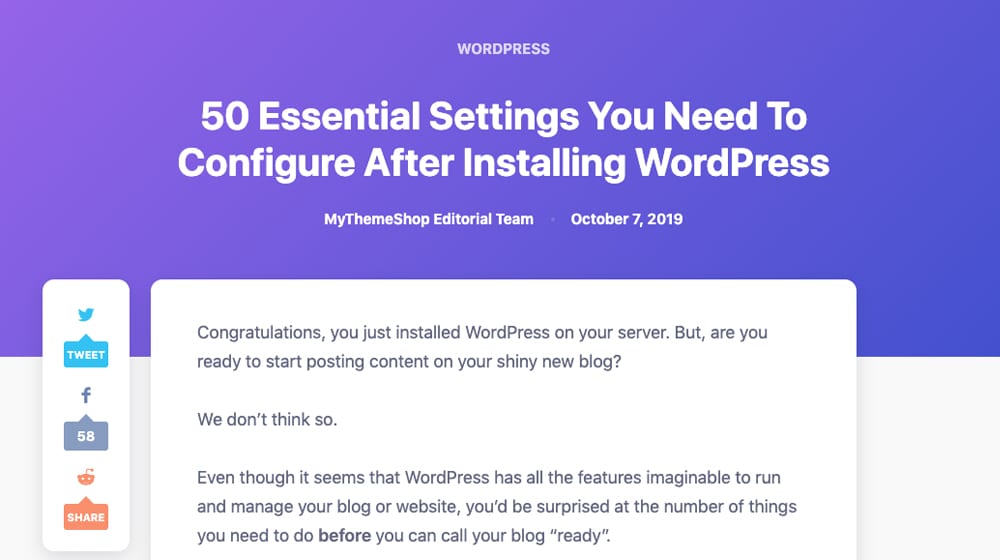25 Tips to Help You Write Excellent B2B Blog Posts

There's a difference between writing content for individual customers and writing content for other businesses, but that difference might not be as large as you imagine. A huge amount of the content you read online is actually aimed at business-level decision makers, but you can't tell, because it has utility for anyone interested in the subject.
Still, with a few tweaks and a few quirks, you can hone your blog posts for a better business audience, without jeopardizing the voice, style, and informational quality that brought your audience to you in the first place. I've put together a big ol' pile of tips for you here, most of which work together to form one coherent overall blogging strategy. Pick and choose, or use them all, it's up to you!
1. Remember: Businesses are People
No, I don't mean in the "citizens united" way. Remember that businesses are made up of people. When you're marketing to a business, whether that business is a small shop on the corner or a division of Disney, you're marketing to people. Sooner or later, someone – a single person – has to make the decision whether or not to purchase your product. You may be marketing towards a business-level audience with B2B marketing, but you're still trying to convince individual people that they need your product.
2. Don't Write Like a Corporation
We've all seen the corporate writing style. The dry tone, the overly formal word choice, the attempts at jokes that fall flat. It's one thing for your C-levels to write internal documents like that, but it's quite another to write customer-facing content in the same style.

Even in B2B blogging, your content should be fairly casual. You want to know the kinds of businesses you're targeting, of course, and know what kind of people you're reaching, but in general a more casual style is going to work better. The only exception is when you're targeting very old, stodgy, stuck-in-their-ways organizations. That's a specialty, though, and to be honest most of them probably aren't reading blogs in the first place.
3. Use News but Don't Rely on It
Writing news content is a good way to get industry coverage and links, but only if you can be one of the first people to write about it. If your publication schedule means you're covering "news" a few days or a week later, you have to add some value to it for it to be worthwhile.

Additionally, only a few kinds of sites are able to fill their blog with news content and still thrive. For a typical B2B blog, most of your content is going to be more thoughtful, more evergreen, and more focused on analysis. You want to show that you're more than just an RSS feed for Forbes. You want to showcase that you have insight that makes people want to follow you, not your sources.
4. Link Your Content with Other Advertising Channels
One of the biggest mistakes I see businesses do, and this applies to both B2B and B2C, is treating their blogs like stand-alone pillars of marketing. A blog can be largely self-sufficient, but it shouldn't be.
Instead, remember that your blog is just one of several marketing channels, and that you should theme content around other marketing efforts. If you're pushing, say, a holiday sale or special pricing for an event, write content about that holiday or event that ties it into your industry in some way.
5. Build a Brand Style Guide
Small businesses that only have one writer might not necessarily need something like this, but it can still be good to put together regardless. A brand style guide helps people write about your brand, or as your brand, appropriately.

A style guide can have everything from average word counts and acceptable topics to how your company should be referred to, what point of view the writer should use, and other such details.
A good example of a brand style guide that can apply to both internal and external writing is MailChimp's. You can read their guide here, and use it to give you ideas for your own.
6. Build Buyer Personas
I've talked about buyer personas before, but it's always been in the context of B2C marketing. "Jane the young mother with an active career" or "Dave the handyman with a college degree", for example. However, buyer personas are just as important for B2B marketing, they just have a slightly different form.
All blogging needs to know who is the intended audience for the content you're producing. What level of company are you trying to reach, what budget are you looking for on average, what industries do they serve? Internally, who are you trying to reach within the organization, and what kinds of problems are you trying to solve? This is a great guide for putting together some B2B personas.
This may come as a surprise to you, but a lot of the people you see credited as writing blog posts are fake. Either those people are tied to the company but never wrote the posts, or those people aren't even real people at all. It's easier and easier every day to get unique profile pictures, and names are a dime a dozen.

Having multiple authors on your blog can have a range of benefits, like establishing your business as larger than it is, giving you multiple "people" who can contribute different perspectives to your industry, and so on. It can be a pretty good option, and it's easy to abandon later if you don't need all of those authors after all, or replace them with real authors.
8. Use Careful Negativity
Negativity can be a powerful psychological technique when used properly. Properly is the key here. Don't write content like "10 reasons why our competitor sucks". Instead, write something like "The Kinds of Customers We Don't Work With."
The power of this kind of post is that people will inherently try to avoid being one of the people in the "bad" category, so they will rationalize ways they fit in with you. Some of them will even be more convinced that they're within your target customer range and will reach out to see how true that is.
9. Monitor and Respond to Popular Industry Content
Even if you consider your business unique in your niche, you still need to be part of the overall industry. Other people are writing content that relates to you and your niche, or to your industry as a whole. You live in a society. You need to engage with the world around you.
One of my favorite techniques for this is to look for popular content that other blogs are posting, and write up direct responses to it. This doesn't really work for something like a top ten list, though you can certainly refute why their choices are wrong and you have better options. It works better for sites that take a stance, particularly a controversial one, and refute them. Bonus points if you have plenty of data to back up your point.
10. One-Up Other Popular Content
Similar to the above technique, you can also take the "anything you can do, I can do better" approach. Did a competitor write a popular top 10 list for tools in your industry?

Why not write the same thing, only with 15 items on the list instead, and more detail for each entry on why they're the best? You can take this perspective with just about anything that isn't an individual case study or something inherent to that business.
11. Use Jargon and Industry Terms Appropriately
Jargon, abbreviations, and insider terms can have three effects.
First, if you use them and the reader isn't familiar with them, they'll feel like they're reading the wrong content and that they shouldn't be there. You'll drive those users away. This isn't always a bad thing – those users might be better suited to more entry-level content on your site – but you need to be aware of it.
Second, if you don't use them and the reader is familiar with them, you look like you're treating them like newbies. It's not a great look to try to sell a book by asking if the person knows how to read, right?
Third, if you use them and the reader is familiar with them, it fosters an atmosphere of the "inner circle". People feel like they're in the know, and that you're talking on their level. This is very valuable and is why I don't just say "never use jargon." You have to know which segment of your audience you're writing to, and use the appropriate level of terminology for that audience.
12. Don't Be Afraid to Write Deep, Narrow Content
To follow up on that third point up there, don't be afraid to write content that only specialists will really understand. Here's an example. This blog post from Toptal is pretty advanced. I know my way around computers but this is a level of engineering that is beyond me, and that's fine:

The post isn't written for me. If they tried to write it for me, it'd have 5,000 words of explanation of foundational concepts, and that would get in the way of the people who actually are interested in what it all means. It's a great post for people who want to read it, and is a wonderful example of how narrow content can still be valuable.
13. Make Predictions for the Future
If you make a prediction about the future and you're wrong, you can write a retrospective on what happened to prove you wrong. If you write a post predicting the future and you're right, you immediately gain value as a thought leader with insight into the industry. Both outcomes are great content, and it's why one of my favorite now-defunct SEO series' was Rand Fishkin's SEO predictions.
14. Use Your Resources as a Business
As a business you have access to all manner of internal data that can be used for interesting and science-backed blog posts. Make use of this data for case studies and other insightful looks behind the curtain. This both allows other companies to trust you more, and allows you to prove, with data, that you know what you're doing.
15. Ask Clients What They Want to Know
One of the best ways to figure out what your customers want is to just ask them. My recommendation is to craft an industry survey with a bunch of questions relating to the industry, to pain points, and to other aspects of your niche. Send this survey out to customers and potential customers.
You can then use the responses to guide your business and your marketing, as well as releasing the data and a case study written about it. If you have a large enough sample size, this kind of survey becomes the sort of data source other blogs link to for years.
16. Create Index Posts
One way I like to add value to older, more established blogs is to create large mega-post style posts for a given subject. The post itself doesn't have a ton of valuable content, but it serves as a framework for a ton of links.

Many of those links go towards internal content, but plenty of them can go to top-tier guides found on other websites as well. This becomes a core resource for your audience to reference, and can be kept up to date with more and more links and information as you build it out.
17. Provide Usage Guides and Resources for Customers
When you have a product for sale, you generally want to have instructions, usage guides, tutorials, or other hand-holding available. A lot of this will, of course, be provided as documentation to customers or in a customer-facing knowledge base, but you can also provide a lot of it to the public.
18. Cover Topics Outside Your Specialty
Another major mistake I see a lot of B2B companies making is trying to force every blog post to orbit their specialty. This might mean that one narrow segment of your customer base is well taken care of within your blog, but it alienates a lot of people who could be customers if you just looked in their direction.
19. Don't Hoard Your Expertise
There's a perception from decades ago, that knowledge within your business needs to stay within your business. There's this idea that everything from your marketing techniques to your internal structure to your knowledge base is a trade secret, and that if those secrets get out, your company will fall apart.

This hasn't been true, at least not of good businesses, for a very long time. Collaboration is the name of the modern game. Showcasing your knowledge publicly help build trust. Customers want to know that you know what you're doing, and showing that publicly is a great way to attract new users and convince existing users of your validity.
20. Audit Existing Content for Viability
The longer you've been blogging, the more likely it is that you have a lot of old content that's not doing anything for you. Going through old content and auditing it is a good way to figure out if any of that old stuff is holding you back, or if there's room for improvement. Old content doesn't need to just be there doing nothing; you can increase the return on investment for even old content just as easily as new content.
21. Improve or Remove Older Content
When you're auditing that old content, you should generally categorize posts into three piles. You have the pile of good content that can be made better. You have the pile of mediocre content that can be improved or left alone. Then you have the pile of bad content that either needs to be improved or removed.
This third pile is the most crucial. It's the content that, if you were to delete it, would probably boost your SEO ranking across your site. If you can improve it, great; otherwise, get rid of it.
22. Monitor Key Performance Indicators for All Content
Take blogging seriously. Honestly, if you only follow one tip on this entire list, make it this one. Key performance indicators are an essential set of data to track to see, tangibly and in numbers, how your blog is performing. When you're actively monitoring these metrics, you can make changes to improve them and actually know that you're improving, rather than just guessing.

What metrics, specifically, should you track? There are a lot of possible answers, but at the very least you should be tracking leads and sales as referred by your blog.
23. Republish and Promote Old, Good Content
Who says you can only publish a blog post once? Obviously you can't just copy and paste an old post and publish it again, but what you CAN do is re-publish old content with a new date, maybe some updated information and, most importantly, another run through your social media feeds and advertising. Push more and more attention on your top-tier posts, as measured by your KPIs, until they're tapped out.
24. Produce "Paid" Upgrades for Top Level Content
One nice technique is to add upgrades to your content once it reaches a certain level of visibility and performance. Some ideas include recording an audio version of the post to embed, converting your post into video for YouTube, or writing a longer and more detailed version of the post to distribute as an ebook.
Now, you're probably not going to get much by selling these upgrades, but what you can do is request that potential customers give you their email address or some other piece of information to access it. They "pay" you by becoming leads. It works surprisingly well!
25. Write More of What People Like
At the end of the day, the best blogging strategy is to just monitor what people like and do more of it. If you write a post that gets you sales, figure out how to write more posts like it.










September 01, 2020
This is a good article. Thank you for sharing this. I would like to write a blog post for my new business but really don't know how to start. Glad I saw this.
September 02, 2020
Hey Gary, thanks for your comment, and I'm glad it helped!
December 10, 2020
Do you think it's best if we use LinkedIn for blogs instead of our own site? Do you think it will reach out to more businesses?
December 11, 2020
Hi Thelma! If you're in a B2B industry, you should definitely take advantage of LinkedIn.
At the very least, share your articles to LinkedIn, and you could also experiment with LinkedIn articles.